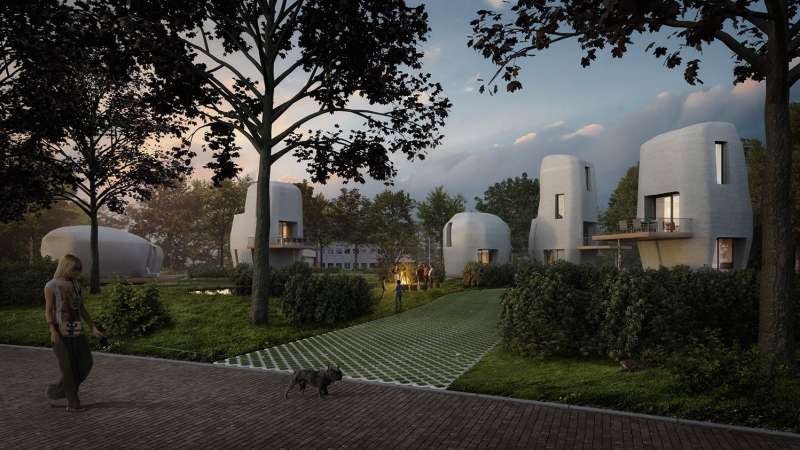In the Netherlands, 3D printing is entering a new stage: by the end of the year, construction will start on a new type of house — a 3D-printed house.

The Dutch city of Eindhoven is promoting the innovation and has already received applications from 20 interested families just a week after images were made available. The construction, known as Project Milestone, will be realized in the Eindhoven city expansion area Meerhoven, and will feature five houses, the first of which might be laid down by the end of the year.
The Dutch construction company Van Wijnen worked with researchers from the University of Eindhoven to lay the foundation of the project. The 3D printer in this case is essentially a huge robotic arm with a nozzle that squirts out a specially formulated cement, said to have the texture of whipped cream. The cement is “printed” according to an architect’s design, adding layer upon layer to create a wall, as in all 3D prints. This will ensure that the structure has the necessary strength while not using more materials than necessary.
“We have no need for the moulds used to create houses made with cement today, and so we will never use more cement than is necessary,” said Rudy van Gurp, a manager at Van Wijnen, to The Guardian.

The design aims at having a smart, efficient, and sustainable construction process. The innovative construction method has several advantages. For starters, it reduces the need for skilled construction workers, which have become a somewhat scarce commodity in the Netherlands. The design techniques are also very flexible — you don’t need to limit construction to the standard shapes, you can opt for any design imaginable. As mentioned above, the process also reduces the total required material, which reduces overall emissions. The 3D-printed cement also enables architects to design very fine concrete structures, blending all kinds, qualities and colors of concrete, all in a single product.
Van Gurp says it will soon be cheaper than conventional building:
“I think by then about 5% of homes will be made using a 3D printer. In the Netherlands, we have a shortage of bricklayers and people who work outside and so it offers a solution to that,” van Gurp says. “It will eventually be cheaper than the traditional methods. Bricklaying is becoming more and more expensive. Alongside, bricks and the use of timber, this will be a third way, which will look like stucco [plastered] houses, which people like.”


The houses will be built consecutively so that all the lessons from a previous house can be applied to the next one. By the time the last house (which comprises three floors and three bedrooms) is completed, the printer will have also developed the drainage pipes and other necessary installations — at least that’s the plan.
So, would you move into a 3D-printed house?


